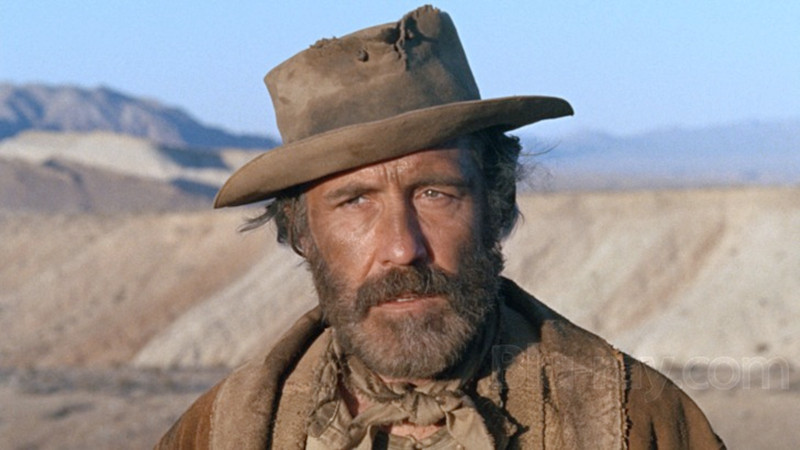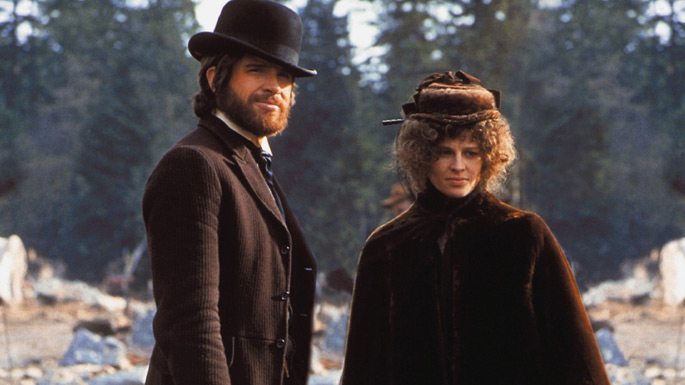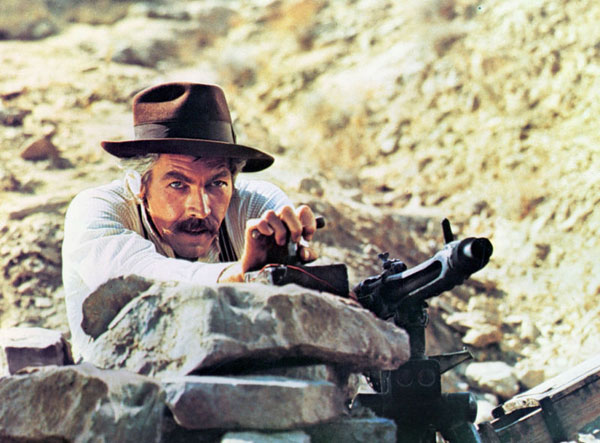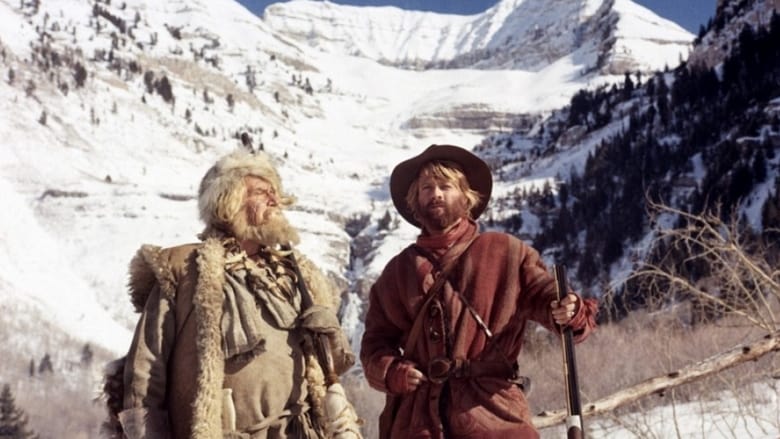
Every champion must die and every empire must fall; the inevitability of decline after incredible success is part of nature’s course correction. Look no further than the recent diminishment of superhero cinema or the collapse of the musical in the last few decades of the 20th century. The Western, an endlessly reliable source of income for both US and Italian filmmakers in the 1950s and 1960s, wilted into its twilight zone in the 1970s.
The rebellious young filmmakers who pioneered the Hollywood New Wave turned to the themes of the time to define their work: paranoia, anti-establishment ideology, conspiracy, distrust, violence. This artistic rebellion left the Western, a firm representation of moral earnestness and a reminder of the importance of law, at a creative crossroad. By the end of the 1970s the genre had faded but not before some of the great directors snuck in some final heavy hitters.
1. The Ballad of Cable Hogue (1970)

Sam Peckinpah’s most accessible film is a gentle, likeable comedown after the brutal violence and depressing themes of The Wild Bunch the year before. Jason Robards, in what feels like a rare lead role, plays Cable Hogue. Hogue is a prospector who heads to Arizona at the start of the 20th century. It feels like a race against time; the last chance for someone to find success on the frontier before it vanishes forever.
Robards is playful in his performance and there is no denying how well his weathered features and badger beard fit into the Old West landscape. It is lovingly shot by Peckinpah, who deemed it one of his favourite films, and represents a diverging strand within his filmography because of its lighter tone. Still, ‘Bloody Sam’s’ main thematic preoccupation drives the story: the times are a-changing. The arrival of a car to the film’s climax feels like a lazily repeated metaphor from The Wild Bunch, but here it makes an elegant contribution to the actual story and, ultimately, defines the film’s sense of loss.
2. McCabe & Mrs Miller (1971)

Warren Beatty’s McCabe rides into the chilly town of Presbyterian Church wearing an enormous fur coat whilst Leonard Cohen’s soulful, bittersweet poetry plays on the film’s score. Director Robert Altman sets the bleak, elegiac tone immediately, with the film’s unique look (cinematographer Vilmos Zsigmond ‘flashed’ the negative before the exposure rather than in post-production) creating the feel of a history textbook brought to life.
A Revisionist Western of the highest order, Altman spins many of the standard genre tropes on its head: McCabe is a businessman rather than a lawman, the gunfight is an unceremonious scuffle in the snow, the love interest is more of a business partner (hence the ‘&’ of the title) and capitalism is a flagrant evil that always ends in violence. This is not an entry-level Western to enjoy as its subversive streak is so essential to its greatness.
Beatty is wonderful, as is Julie Christie as Mrs Miller, but for a scene-stealing turn look out for Hugh Millais’ intimidating hired gun Butler, who sports a vast hunting rifle against McCabe’s emasculated Derringer.
3. A Fistful of Dynamite (1971)

Sergio Leone’s last ride for the genre he effectively redefined is his least seen. The Italian filmmaker had a career that feels counteractive to what Sam Peckinpah was up to: when Peckinpah made a film about old heroes, Leone made a film about young heroes; when Peckinpah made a Civil War film, Leone made a Civil War film; when Peckinpah made a Mexican Revolution film, Leone made a Mexican Revolution film. A Fistful of Dynamite / Duck! You Sucker (depending which side of the pond you live on) is the latter.
Rod Stieger and James Coburn star as Mexican outlaw Juan and IRA explosives expert John who, after initial hostility, wind up together as heroes in the Mexican Revolution. A Zapata Western with vast set-pieces and the winking humour that Leone was renowned for, A Fistful of Dynamite also boasts, unsurprisingly, a wonderfully hummable Ennio Morricone score (“Sean Sean!”). Most memorable are the striking sequences that play with no dialogue. These include flashbacks to John’s life in Ireland, the silent observation of a massacre and the emotional discovery of a murdered family.
It would be 13 years later that Leone would make his final film, gangster epic Once Upon a Time in America. Leone’s transition from the entertainment focus of his Dollars trilogy to the sombre, sweeping tone of his Once Upon a Time… trilogy finds a master director at his most artistically responsive.
4. Jeremiah Johnson (1972)

The GIF of Robert Redford nodding underneath a magnificent bushy beard might be Jeremiah Johnson’s biggest contribution to popular culture. Sydney Pollack directed this stirring frontier survival guide about mountain man Jeremiah Johnson, using his muse Redford as the title character. It is one of the best of their collaborations (which also included Three Days of the Condor in 1975) mostly because few other Westerns have so closely followed one man’s solitary existence in the mountains.
The film makes extensive use of Utah’s National Parks and the results are phenomenal. Jeremiah Johnson looks like a nature documentary at times; the mountains are kissed with snow and the treelines evoke an eeriness for the natural dangers they conceal. The scenery threatens Johnson throughout but, once he learns to live harmoniously with the land, it becomes his biggest ally. A winter classic for dads around the world, this is a survival film that also sees Redford accumulate a kill count worthy of Clint Eastwood.
5. My Name is Nobody (1973)

Ennio Morricone’s central theme for this Spaghetti Western sounds like a children’s TV show theme. It quacks and flutes and makes all types of strange noises that seem hard to place. It is unusual in its light-hearted tone yet it beautifully contrasts with the range of tones found in My Name is Nobody.
A legendary gunfighter, Jack Beauregard (Henry Fonda), looks to retire from his career of killing. He is the fastest in the land and everywhere he goes someone wants the glory of slaying him. Enter Nobody (Terence Hill), a young gunslinger who idolises Beauregard and wants him to go out in mythic fashion: taking on all 150 members of the Wild Bunch gang. It is a neat twist on The Gunfighter, a 1950 Western in which the relentless cycle of violence is reflected in the desire of men to always kill the man who killed so-and-so. Nobody wanting to secure Beauregard’s legend forces the old timer into a final showdown that is definitely worth viewing.
Beauregard was Henry Fonda’s final lead role in a Western and gives him an appropriate sendoff that, like Clint Eastwood in Unforgiven, feels as relevant for the character as it does for the actor. My Name is Nobody has a contested production. Fans of Sergio Leone will scarify the film to analyse which scenes he directed – it is uncertain how much credited director Tomino Valerii actually filmed.